Get ready for an adventure of a lifetime! Wildlife encounters can be some of the most thrilling and memorable travel experiences. Imagine coming face-to-face with majestic creatures in their natural habitats. From cuddling cows in New York to spotting penguins in Antarctica, there’s a wildlife trip for every animal lover.
The best wildlife encounters let you observe animals up close while respecting their space and well-being. Many places now offer ethical experiences where you can interact with animals in safe, controlled settings.
You might brush a cow, watch cheetahs sprint, or snorkel alongside sea turtles. Just be sure to choose reputable operators that prioritize animal welfare.
Consider what animals you’d like to see when planning your wildlife adventure. Do you dream of African safaris with lions and elephants?
Or would you prefer to observe marine life like whales and dolphins? The world is full of amazing creatures waiting to be discovered. You can find the perfect destination to fulfill your wildlife dreams with some research.
Top Wildlife Encounters Around the World
1. Swimming With Turtles in the Galapagos

Imagine gliding through crystal-clear waters surrounded by graceful sea turtles. The Galapagos Islands offer this magical experience.
You’ll find the best turtle-watching from July to December. The cooler waters attract these gentle creatures. But don’t worry – it’s still warm enough for you to swim comfortably.
Snorkeling is your ticket to turtle encounters. Popular spots include:
- Isabela Island
- Santa Cruz Island
- San Cristobal Island
Bring an underwater camera to capture the moment. You’ll be amazed at how close these curious creatures get!
But turtles aren’t the only stars of the show. Keep your eyes peeled for:
- Playful sea lions
- Colorful tropical fish
- Majestic eagle rays
- Adorable Galapagos penguins
Can you believe it? You might even spot swimming iguanas! These unique lizards have adapted to marine life.
Remember to respect the wildlife. Don’t touch or chase the animals. Let them approach you naturally. It’s their home, after all.
Ready for your turtle adventure? Pack your snorkel gear and dive into the wonders of the Galapagos!
2. Whale Watching in Iceland

Iceland offers an incredible chance to see whales up close in their natural habitat. The cold, nutrient-rich waters around the island attract various whale species year-round.
The best time for whale watching is from April to October. You’re most likely to spot humpback, minke, and even blue whales during these months if you’re lucky.
Reykjavik, the capital, is a popular starting point for whale-watching tours. You can hop on a boat right from the Old Harbor. But don’t limit yourself to just the city – other great spots include:
- Husavik in North Iceland
- Akureyri in the North
- Dalvik on the Tröllaskagi peninsula
Most tours last about 2-3 hours. Dress warmly, even in summer, as the wind can be chilly out on the water.
Here’s what you might see on your whale-watching adventure:
- Humpback whales breaching the surface
- Playful dolphins riding the bow waves
- Curious minke whales approaching the boat
- Massive fin whales in the distance
Remember to bring a camera, but don’t forget to enjoy the moment with your own eyes too. The sight of these gentle giants in their element is truly awe-inspiring.
Many tours offer a “whale guarantee” – you can go again for free if you don’t see any whales. It’s a great way to increase your chances of an unforgettable encounter with these majestic creatures.
3. Orangutans in Borneo
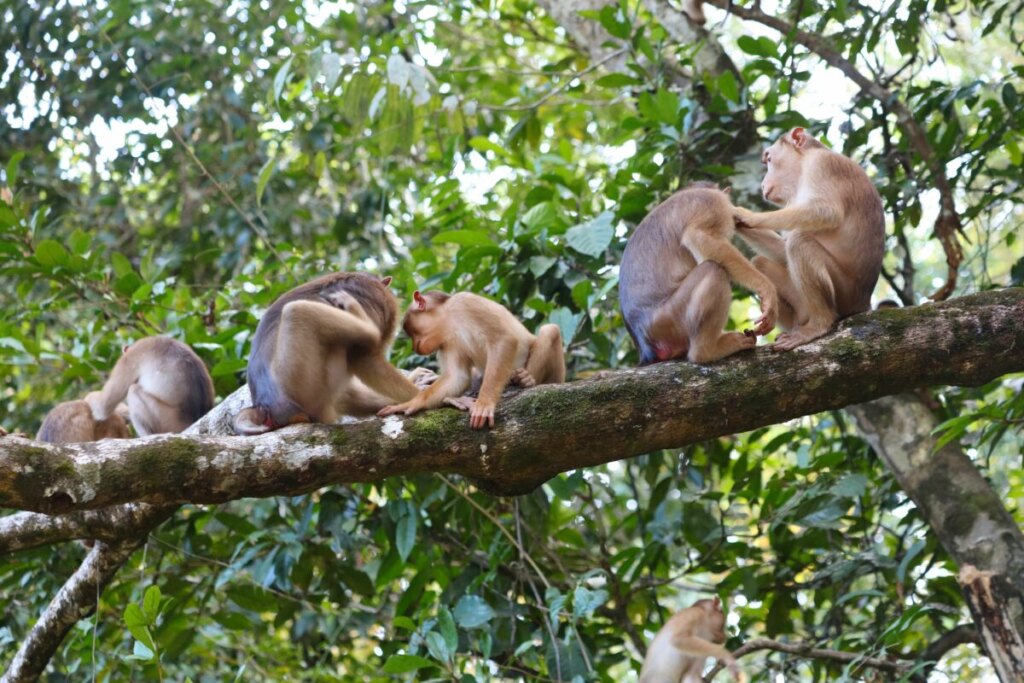
You’ll be awestruck by the gentle orange giants swinging through the lush canopy of Borneo’s rainforests. These incredible creatures are found only in Borneo and Sumatra, making a trip here special.
The best time to spot orangutans is during the dry season, from March to October. This is when the fruit is abundant, and the apes are most active.
Here are some top spots to see orangutans in the wild:
- Kinabatangan River, Sabah
- Danum Valley, Sabah
- Deramakot Forest Reserve, Sabah
- Tabin Wildlife Reserve, Sabah
You can visit rehabilitation centers like Semenggoh Wildlife Centre near Kuching for a guaranteed sighting. Here, you’ll see orangutans up close during feeding times.
On a river cruise along the Kinabatangan, keep your eyes peeled for orangutans nestled in the trees. You might spot over 1,100 elusive creatures living in the dense jungle.
For a more immersive experience, stay at Samboja Lodge. Home to about 210 orangutans, you’ll have the chance to observe these fascinating primates and even contribute to their conservation.
Remember to respect their space and follow your guide’s instructions. You’ll create unforgettable memories of Borneo’s most famous residents with patience and luck.
See Related: Best Places to Visit in the World
4. Great Migration in Serengeti
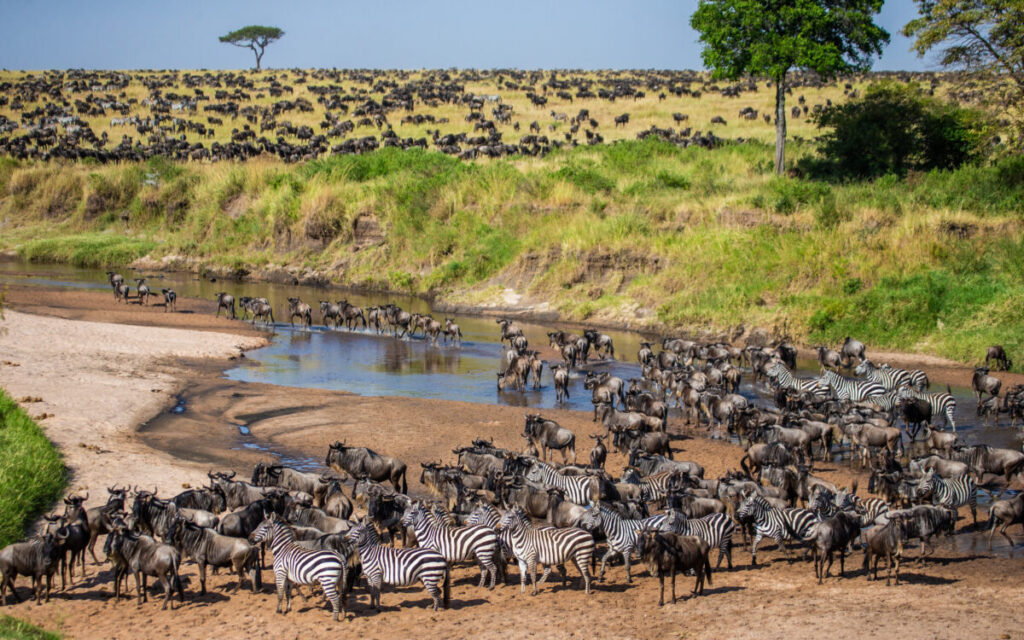
Picture yourself in the heart of Africa, witnessing one of nature’s most awe-inspiring spectacles. The Great Migration in Serengeti is a breathtaking journey of over two million wildebeest, zebras, and antelopes across the vast plains.
You’ll be amazed by the sheer number of animals moving as one massive herd. The thundering hooves and dust clouds create a scene from a wildlife documentary. It’s a sight that’ll stay with you forever.
The best time to see this incredible event depends on what you want to experience:
- December to March: Calving season in southern Serengeti
- April to May: Herds move north
- June to July: River crossings begin
- August to October: Dramatic Mara River crossings
- November: Animals return south
For the most dramatic views, plan your trip during the river crossings. You might witness heart-stopping moments as animals brave crocodile-infested waters.
Remember, nature is unpredictable. The migration’s exact timing can vary each year. It’s best to book a flexible safari to adjust to the animals’ movements.
As you watch this natural wonder unfold, you’ll feel a deep connection to the rhythms of the wild. The Great Migration is more than just a wildlife sighting – it’s a life-changing adventure you’ll never forget.
5. Gorillas in Uganda

Uganda’s lush forests offer an incredible wildlife experience. This East African country is home to about half of the world’s mountain gorillas, and seeing these gentle giants up close is truly unforgettable.
Bwindi Impenetrable National Park is the main spot for gorilla trekking. You’ll hike through the thick jungle with an expert guide to find a gorilla family. You get to spend an hour watching them eat, play, and interact when you reach them.
The best times to go are during the dry seasons: June to August and December to February. The trails are less muddy then, making for easier hiking.
Here’s what to expect on your trek:
- Early morning start
- 2-6 hour hike (depending on gorilla location)
- Small groups (max 8 people)
- 1 hour with gorillas
- Unforgettable photo opportunities
Remember to book your permit well in advance. Only a limited number of visitors are allowed daily to protect the gorillas.
Seeing these majestic creatures in their natural habitat is a powerful experience. You’ll gain a new appreciation for conservation efforts and the importance of preserving their forest home.
6. Polar Bears in Canada
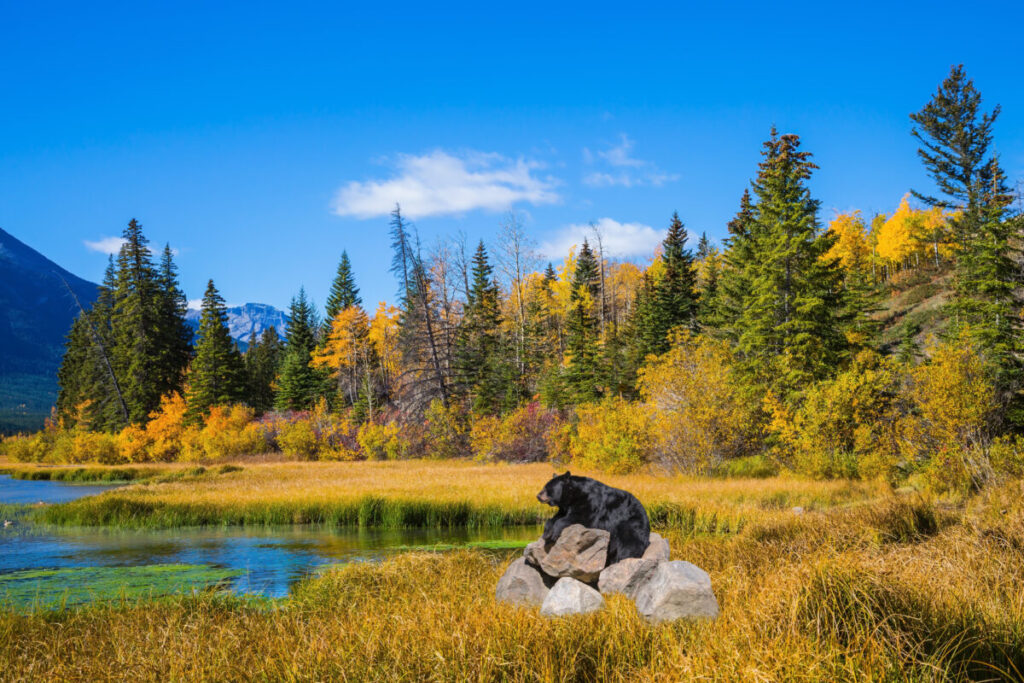
You can have an incredible wildlife encounter with polar bears in Canada. Churchill, Manitoba is the polar bear capital of the world. These majestic creatures gather each fall while waiting for Hudson Bay to freeze.
The best time to see polar bears is October to November. You’ll have a good chance of spotting them from special tundra vehicles. These massive buggies let you safely observe bears in their natural habitat.
Stay at a wilderness lodge for a truly unique experience. Some offer ground-level viewing from fenced-in areas. Imagine watching a curious bear approach just feet away!
Canada’s Arctic regions also provide polar bear viewing opportunities. Places like Nunavut and the Northwest Territories host summer boat tours. You might see bears swimming or lounging on ice floes.
Key facts:
- Canada has about 17,000 polar bears
- Churchill sees 300+ bears each fall
- Bears can weigh up to 1,500 pounds
- Males stand up to 10 feet tall
Remember to always view bears with a trained guide. Never approach them on your own. With proper precautions, seeing polar bears in Canada can be the adventure of a lifetime.
7. Lemurs in Madagascar
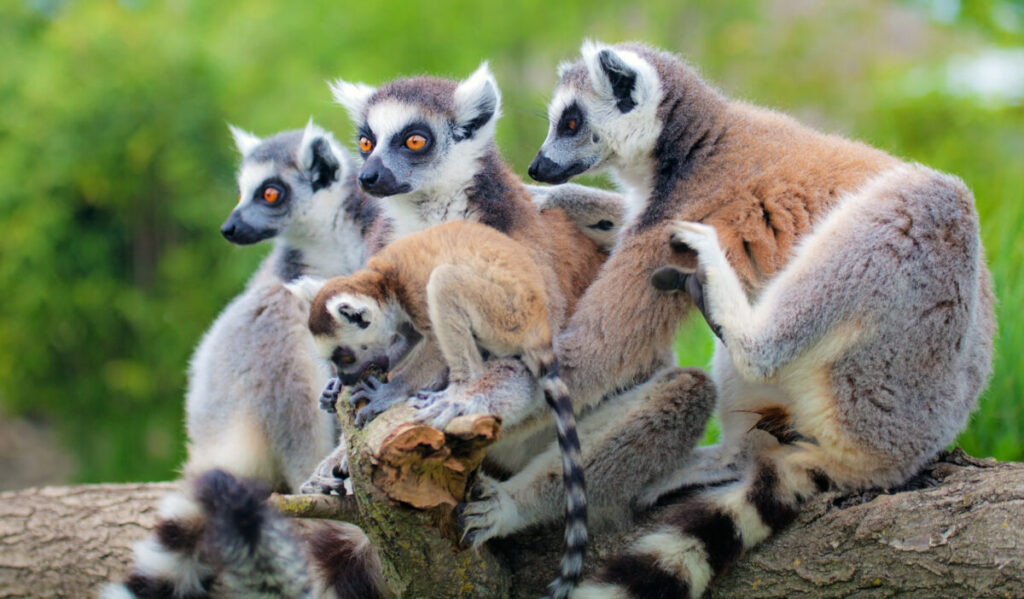
Madagascar is a dream destination for wildlife lovers. The island nation is home to lemurs, those adorable primates found nowhere else on Earth. You’ll be enchanted by their big eyes and playful antics.
Andasibe-Mantadia National Park is one of the best spots to see lemurs up close. Here, you might spot the indri, the largest lemur species. Their haunting calls echo through the misty rainforest.
For a different landscape, head to Isalo National Park. The canyons and grasslands here shelter ring-tailed lemurs. You’ll see them sunbathing on rocky outcrops or leaping between trees.
Want to see rare blue-eyed lemurs? Visit Ankarafantsika National Park on the west coast. It’s one of the only places to find these striking primates.
The best time for lemur watching is April to mid-December. Avoid the rainy season from January to March, when trails get muddy.
Remember to keep a respectful distance from the lemurs. Never feed them or try to touch them. Bring binoculars and a good camera with a zoom lens to capture memories without disturbing the animals.
Hiring a local guide is a must. They know the best spots and can teach you about lemur behavior. Plus, you’ll support the local economy and conservation efforts.
8. Penguins in Antarctica
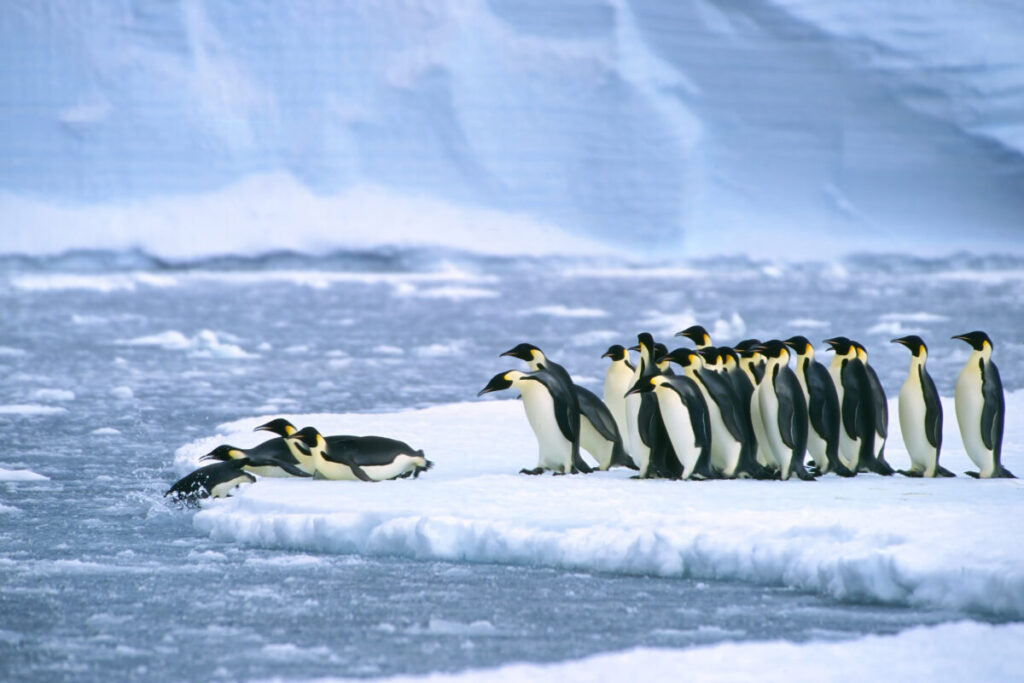
You’re in for a treat when you visit Antarctica to see penguins. These adorable birds waddle across icy landscapes, creating unforgettable memories for wildlife lovers.
Emperor penguins steal the show with their impressive size and striking colors. You might spot them at the Snow Hill colony in the Weddell Sea. It’s a sight to behold, with up to 10,000 penguins gathered in one place!
Gentoo, chinstrap, and Adelie penguins are more common along the Antarctic Peninsula. You’ll see huge rookeries of these species, often right on the beaches. It’s amazing to watch them go about their daily lives.
The best time to watch penguins is during the Antarctic summer, from November to March. This is when the penguins are most active, caring for their chicks and hunting for food.
Here’s a quick guide to some penguin species you might encounter:
- Emperor: Tallest and heaviest, with distinctive yellow patches
- Gentoo: Recognizable by their white stripe behind the eye
- Chinstrap: Named for the thin black line under their chin
- Adelie: Small and playful, with a tuxedo-like appearance
Remember to bring a good camera and binoculars. You’ll want to capture every moment of these charming creatures in their icy home.
See Related: Most Beautiful Palaces in the World
9. Dolphins in New Zealand
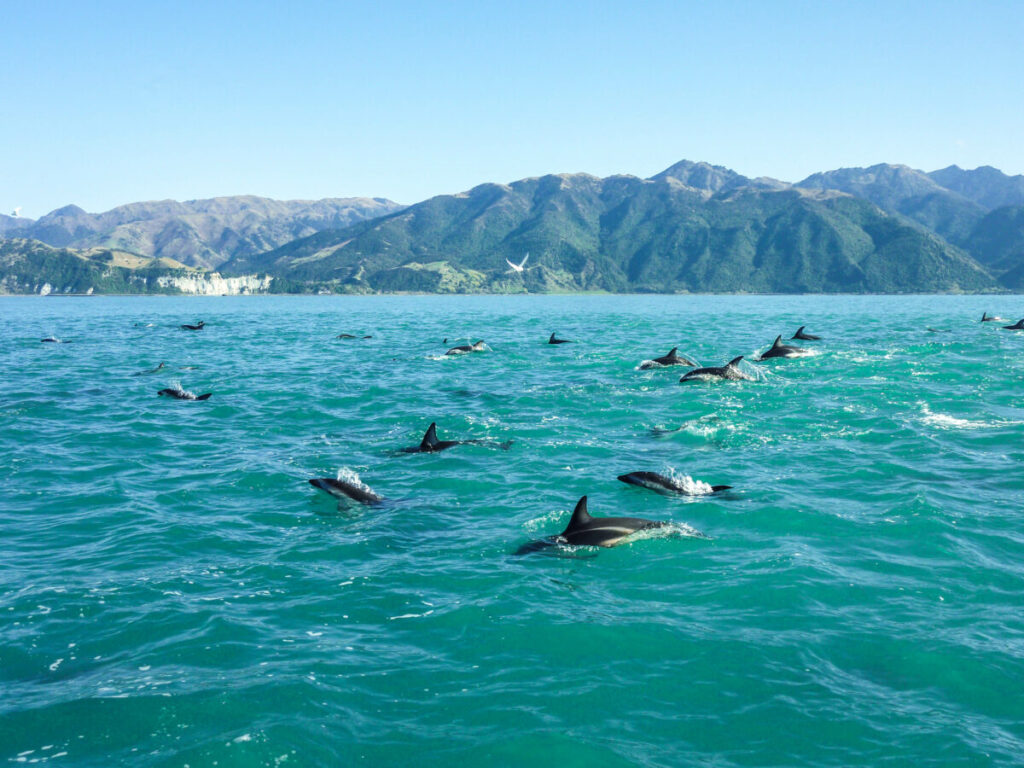
You’re in for a treat when you visit New Zealand’s waters. These pristine seas are home to several dolphin species, offering unforgettable encounters with these playful creatures.
On the South Island, Kaikoura is a top spot for dolphin watching. Here, you can swim with dusky dolphins year-round. These acrobatic performers love to show off their flips and spins, making your swim an exciting adventure.
The Bay of Islands in Northland is another dolphin hotspot. You’ll find bottlenose and common dolphins frolicking in the warm, clear waters. Why not hop on a cruise to see them up close?
For a unique experience, head to Akaroa Harbor. It’s one of the few places to see the rare Hector’s dolphin, the world’s smallest dolphin species.
Here’s a quick guide to New Zealand’s dolphins:
- Bottlenose: Gray, friendly, often seen in groups
- Common: Distinctive hourglass pattern on flanks
- Dusky: Known for acrobatic displays
- Hector’s: Small, with rounded dorsal fin
Remember, the best time to spot dolphins is during summer (December to February). But you can see them year-round in many locations.
Always choose responsible tour operators who prioritize the dolphins’ well-being. Respect these amazing creatures in their natural habitat.
10. Elephants in Sri Lanka
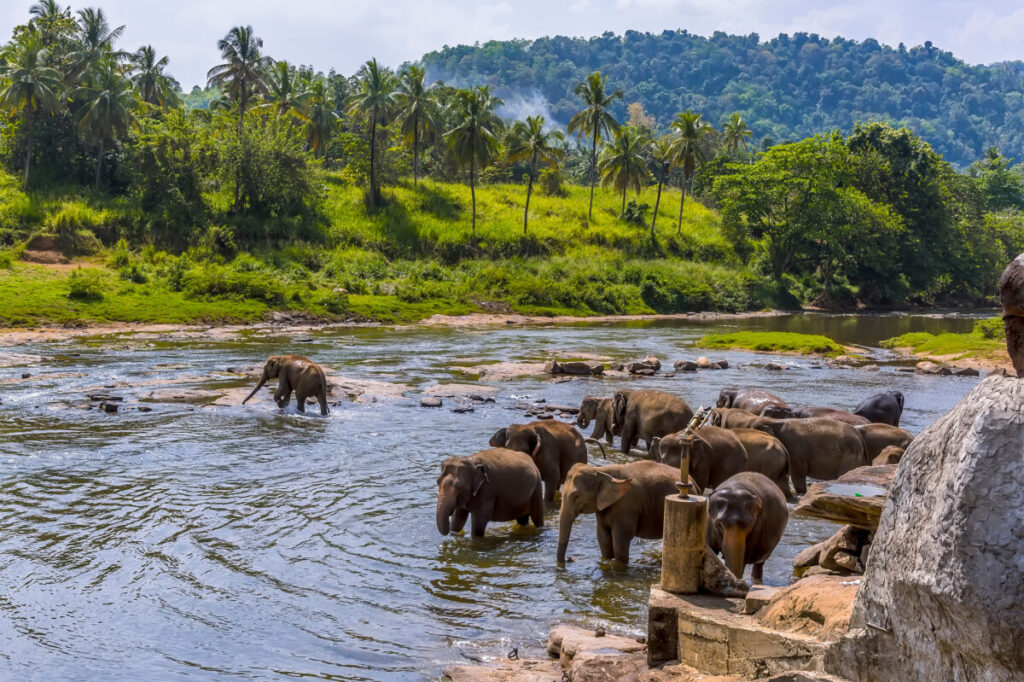
Get ready to be awestruck by Sri Lanka’s gentle giants! This island nation is a paradise for elephant lovers like you. With around 6,000 wild elephants roaming freely, you’re in for an unforgettable wildlife experience.
Want to see these majestic creatures up close? Head to Udawalawe National Park. It’s home to 600-700 elephants, making it one of the best spots for elephant watching. You’ll be amazed as you observe them in their natural habitat.
Minneriya and Kaudulla National Parks are also must-visit destinations. During the dry season (July to October), you can witness the famous “Gathering”—hundreds of elephants congregating around ancient water tanks.
Here are some top parks for elephant encounters:
- Udawalawe National Park
- Minneriya National Park
- Yala National Park
- Wasgamuwa National Park
Remember to book a reputable safari tour for the best experience. Early morning or late afternoon drives offer the best chances of spotting elephants.
Watching these incredible animals, you’ll feel a deep connection to nature. It’s a humbling experience that’ll stay with you long after you’ve left Sri Lanka’s shores.
11. Puffins in Scotland

Picture yourself on a rugged Scottish coastline, watching adorable puffins waddle across rocky cliffs. These charming seabirds, colorful beaks and clumsy gait are a true delight in their natural habitat.
Scotland offers some of the best spots in the world to see puffins up close. From April to August, you’ll find large colonies on remote islands and coastal areas. This is when puffins come ashore to breed and raise their chicks.
Some top puffin-watching locations include:
- Isle of May in the Firth of Forth
- Lunga in the Treshnish Isles
- Sumburgh Head in Shetland
- Fair Isle
- Hermaness Nature Reserve
To get the full puffin experience, book a boat tour from coastal towns like Anstruther or Oban. Expert guides will take you to prime viewing spots and share fascinating puffin facts.
Don’t forget your camera! Puffins are natural posers; you’ll want to capture their comical expressions and colorful beaks. Just remember to keep a respectful distance and follow wildlife viewing guidelines.
Plan your trip between May and July for the best chance to see puffins. This is peak breeding season when the birds are most active on land. Early morning or late afternoon tends to be ideal for puffin-spotting.
See Related: 48 Hours of Magic: Top European Cities for Epic Weekends
12. Tigers in India
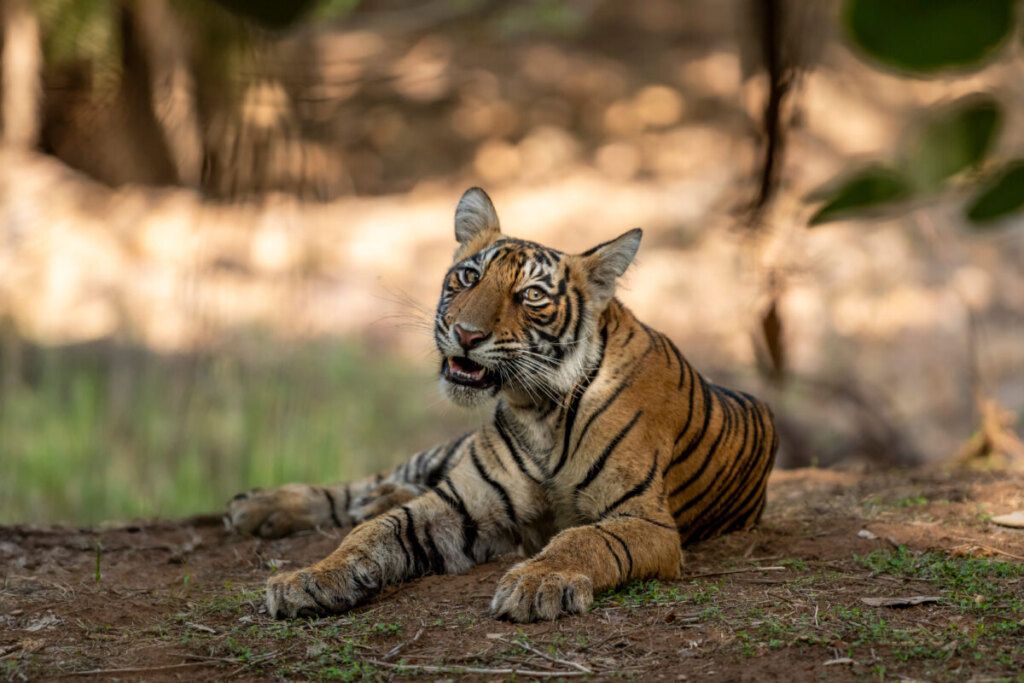
India is a tiger lover’s paradise. About 75% of the world’s wild Bengal tigers are roaming the country’s lush national parks. Want to see these majestic creatures up close? Head to central India’s tiger hotspots.
Bandhavgarh, Kanha, and Pench National Parks offer your best shot at spotting tigers. These parks inspired Rudyard Kipling’s “The Jungle Book.” You’ll feel like Mowgli as you explore their dense forests and grassy meadows.
Here’s a quick guide to planning your tiger safari:
- Best time to visit: October to June
- What to bring: Binoculars, camera with zoom lens, earth-toned clothing
- Safari types: Jeep, elephant-back, or walking (with a guide)
Remember, tigers are wild animals. Sightings aren’t guaranteed, but that’s part of the thrill. You might see a tiger lounging by a watering hole or stalking through tall grass. It’s a heart-stopping moment you’ll never forget.
Don’t forget about the other wildlife. You’ll spot deer, monkeys, and colorful birds too. It’s like stepping into a living nature documentary.
Ready for your tiger adventure? Book with a reputable tour operator. They’ll handle logistics and ensure you can see these incredible cats in their natural habitat.
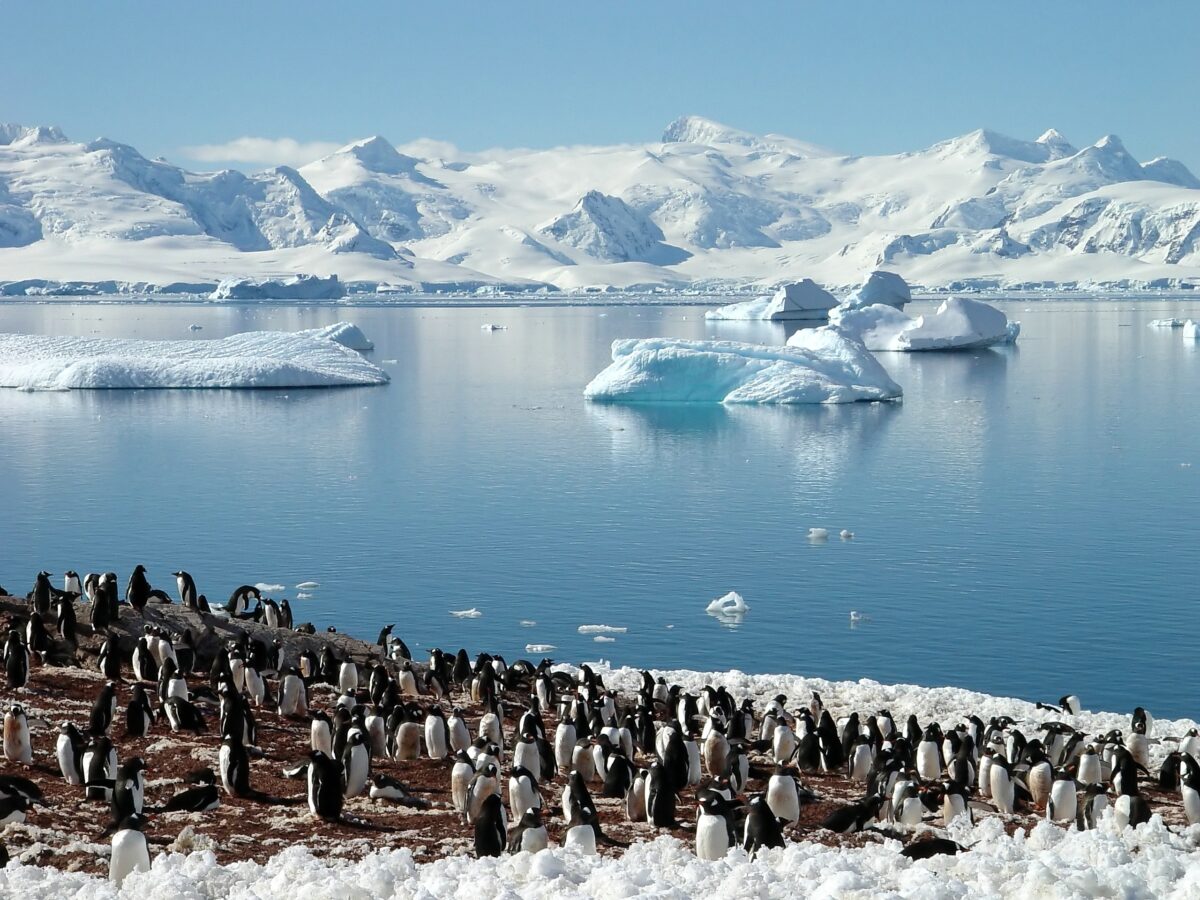
Leave a Reply